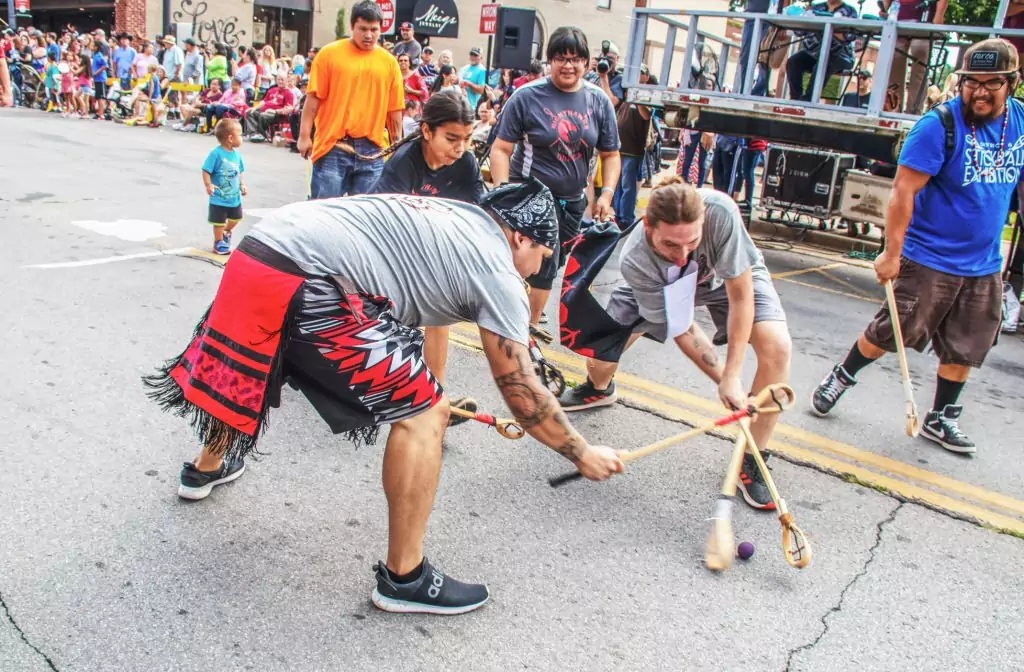Introduction
Indigenous North American stickball, also known as “Little Brother of War,” holds a profound significance in the history and culture of Native American communities. This ancient sport, with roots dating back centuries, is much more than just a game.

It embodies the resilience, spirituality, and tradition of Indigenous peoples, providing a window into their rich heritage. In this article, we delve into the world of stickball, exploring its history, cultural importance, and enduring legacy.
The Origin and History of Stickball
Stickball has its origins in the southeastern United States, particularly among the Choctaw, Chickasaw, Cherokee, and Creek nations. These Indigenous communities refer to the game with various names, such as “Lacrosse” among the Choctaw and “Osti yakni” among the Cherokee. The game, played with a long-handled stick with a woven net or leather pocket at the end, is similar to the better-known sport of lacrosse.
The history of stickball stretches back hundreds of years, with some sources suggesting it was played as early as the 17th century. Initially, the game had deep cultural and ceremonial ties. It was not merely a physical competition but a means of resolving conflicts, fostering diplomacy, and connecting with the spiritual world.
Cultural Significance
Stickball’s cultural significance is difficult to overstate. It is deeply ingrained in the social fabric of Indigenous communities. The game reflects their values, such as teamwork, honor, and respect. It also reinforces the importance of maintaining physical and mental well-being.
In many tribes, stickball carries a spiritual weight, often linked to creation stories and legends. It is believed that the game was a gift from the Creator, and playing it serves as a form of worship and thanksgiving.
Stickball as a Rite of Passage
Stickball is not merely a sport; it’s a rite of passage. Young members of Indigenous communities often start learning the game from an early age. Playing stickball teaches them life skills, such as discipline, leadership, and resilience. The game provides a powerful sense of belonging to a community and honors the collective identity of Native Americans.
Modern Revival
Despite centuries of challenges, including colonialism and cultural assimilation, Indigenous North American stickball has endured. In recent years, there has been a resurgence of interest in this traditional sport. Modern stickball tournaments and leagues have emerged, keeping the ancient game alive. Contemporary players and fans continue to honor the game’s heritage, preserving its customs and rituals.
Challenges and Opportunities
While the revival of stickball is encouraging, challenges persist. Many Native American communities face socioeconomic issues, limiting access to resources and opportunities for their youth. However, stickball serves as a means of empowerment and cultural revitalization. It offers hope and a sense of pride, helping Native Americans maintain their identity and ancestral traditions.
Conclusion: The Timeless Spirit of Stickball
Indigenous North American stickball is more than just a game; it’s a timeless testament to the resilience and enduring spirit of Native American communities. The legacy of this sport weaves a narrative of survival, cultural preservation, and strength against adversity. As modern generations embrace the traditions of their ancestors, stickball remains a vibrant symbol of Indigenous pride and heritage.

